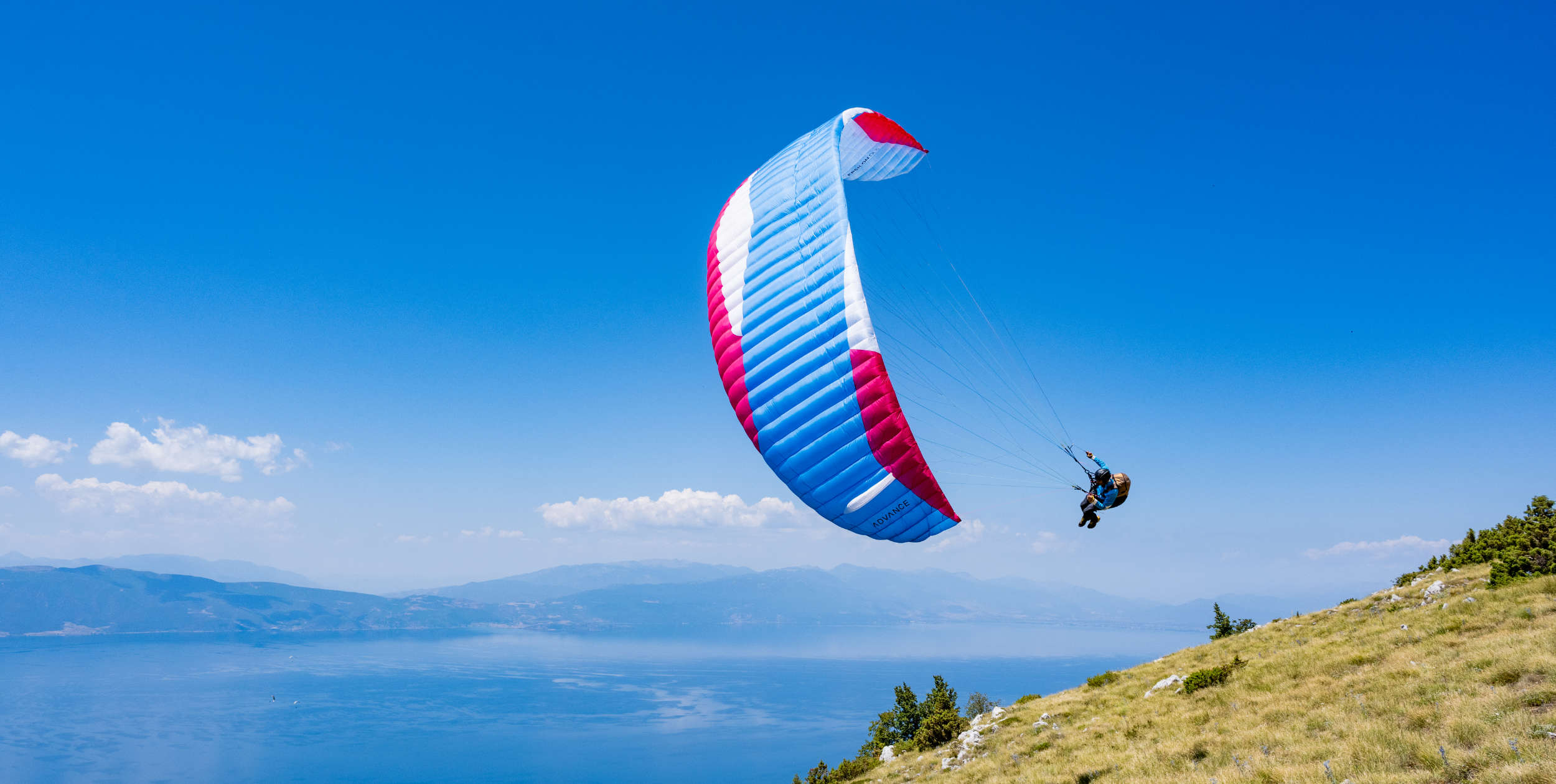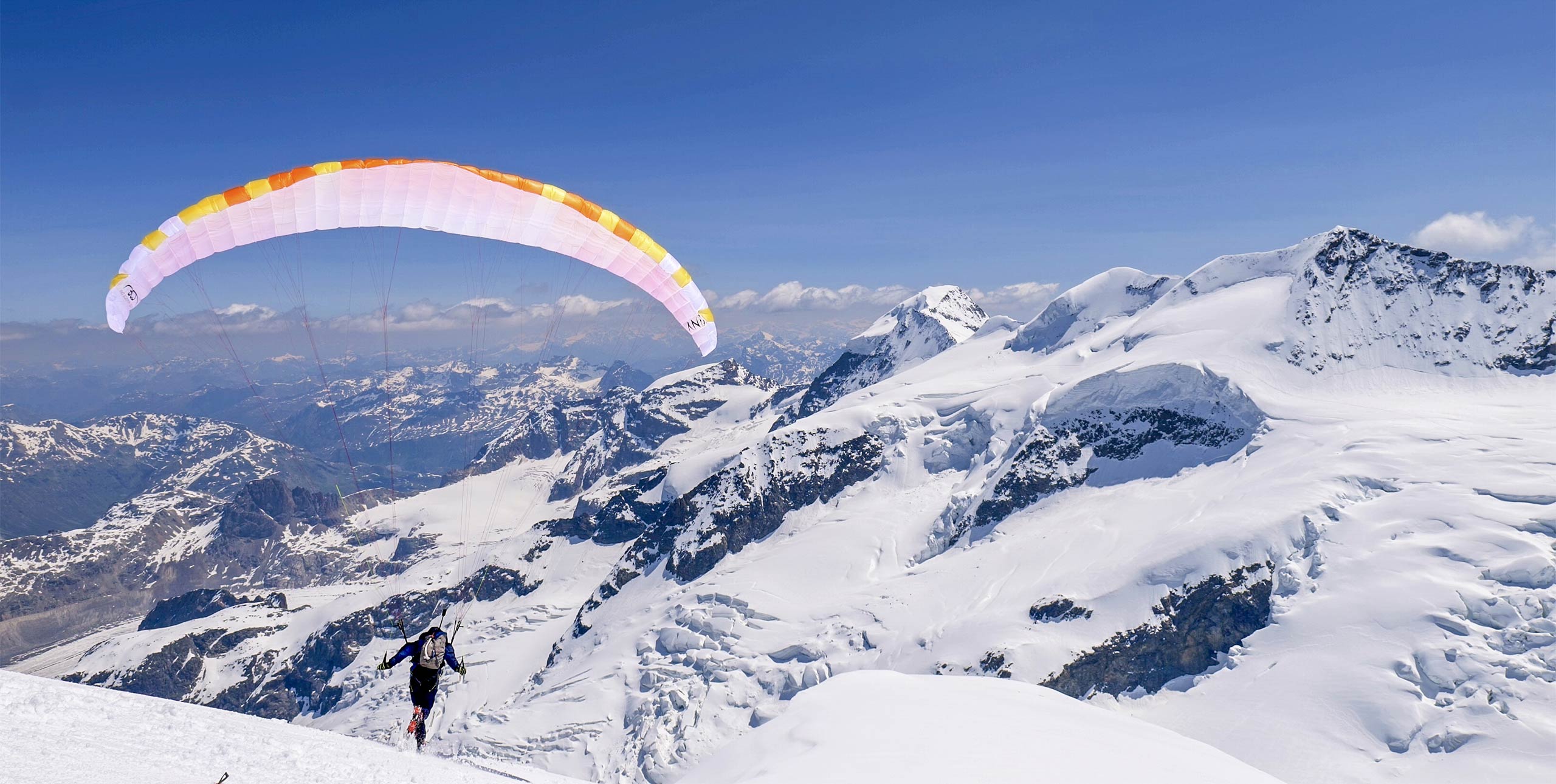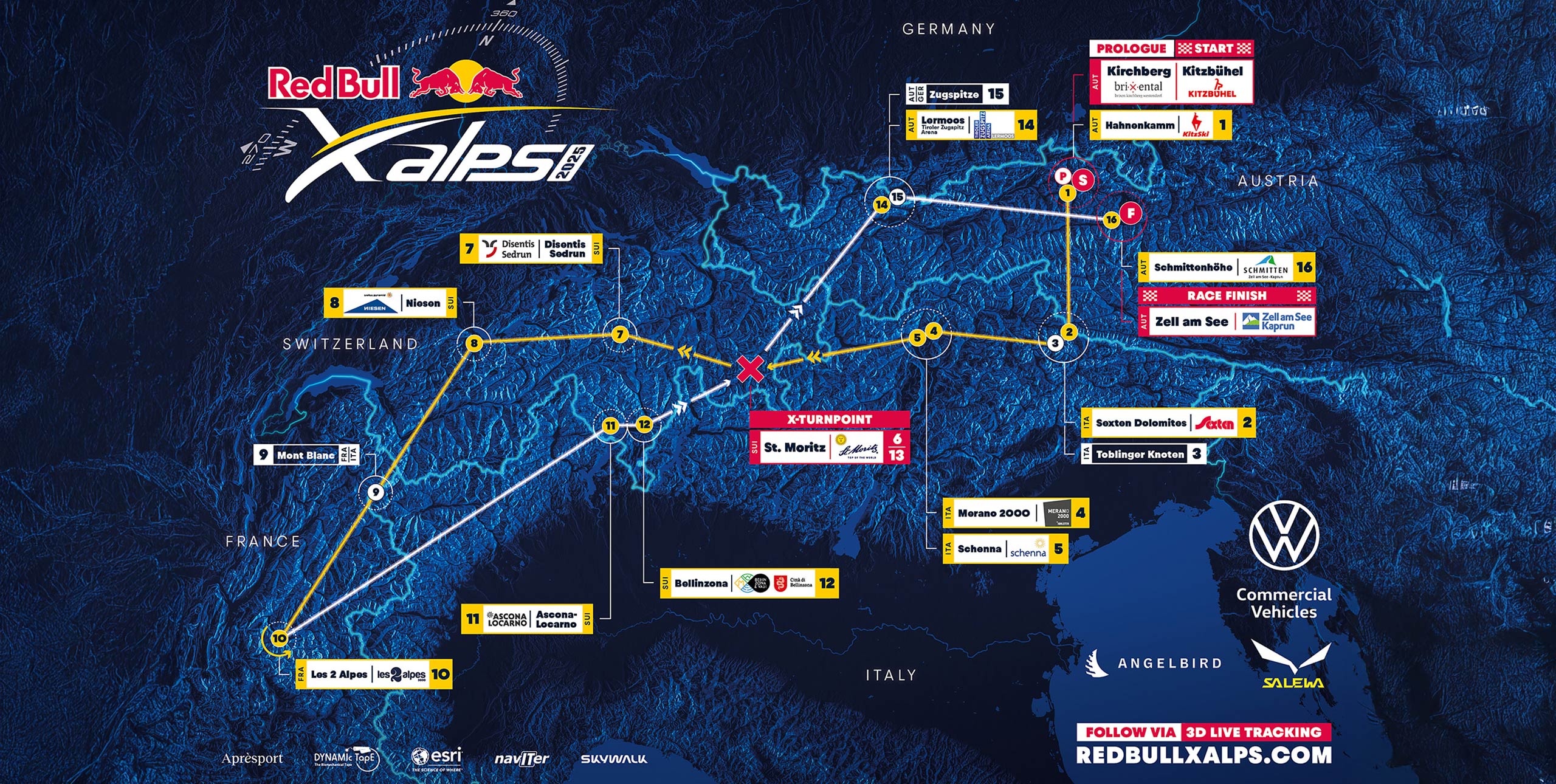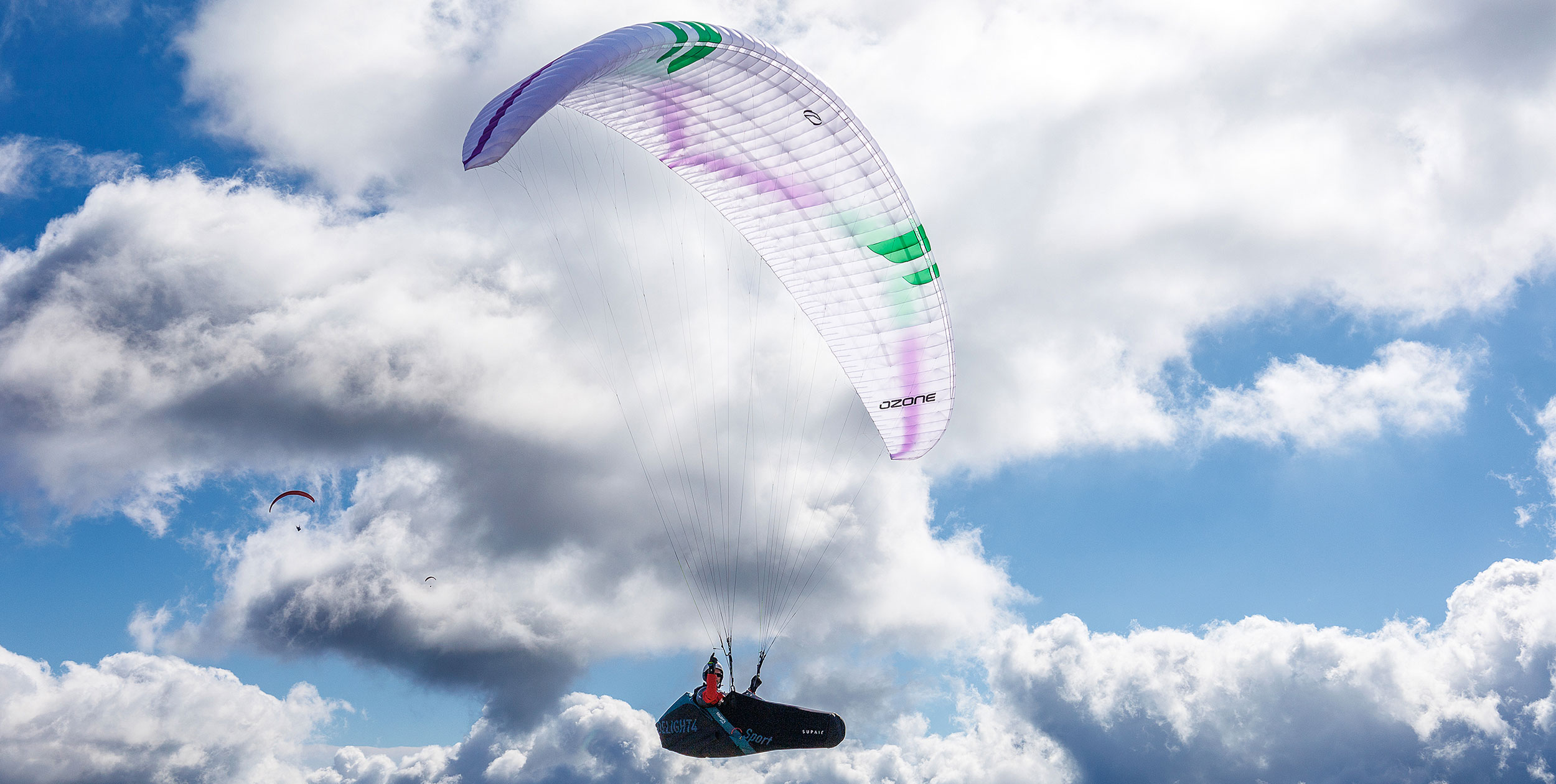
Marcus King flies the Ozone SwiftSix (EN B), the lightweight version of Ozone’s Rush 6
When I reviewed the Ozone Rush 6 (EN B) in the middle of last year I found a wing with great handling and performance for its class, especially when pushing into wind. At the time I said I was looking forward to trying the light version – the Swift 6.
Roll forward six months or so and Ozone’s Russell Ogden told me they had finished the SwiftSix (note the name), had one in my size, and asked if I’d like to fly it. Yes please. So earlier this year I got to take their “production-check” wing away with me for a couple of weeks in the south of France and Bassano in Italy.

Design and materials
Although the wing was ready and fully certified in February it wasn’t released when I had it for testing. Ozone had to delay it, to make sure there was manufacturing capacity available for its release.
The basic wing structure of the SwiftSix is the same as the Rush 6 and it has the same hybrid 2/3-line layout; the only differences are the materials used in the wing itself and some extra porting in the cell walls. The SwiftSix is made primarily from Porcher Skytex 7000 27 but with a leading edge made from the slightly heavier Dominico D20.
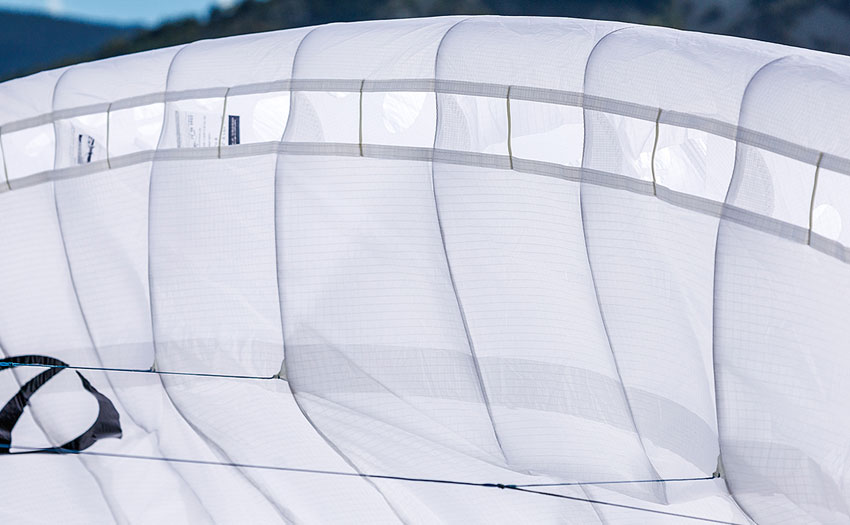
The wing has a sharknose and reasonably long nylon rods, and the demo wing was supplied with a packing pillow. Despite this the packing size is noticeably smaller than the Rush 6. Like the Rush there are G-strings across the middle of the cells, to stabilise their shape at speed. The wing has the same triple-3D shaping across the nose and mini-ribs as well.
The Rush 6 had fully unsheathed lines so there were no savings that could be made there and the Swift uses the same layout and materials as its full-fat sibling. Like the Rush there is a sheathed section of lines at the bottom of the outer A-lines, to make them easier to handle when doing big ears. The A-lines are blue rather than red/orange like the others, so they stand out. The outer line is on a floating mini-riser.
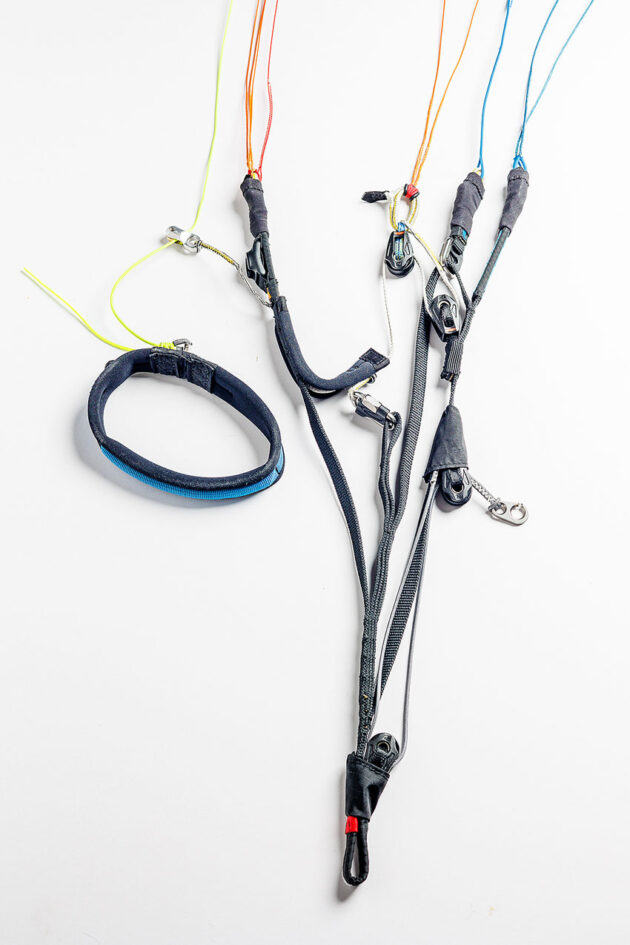
The risers have seen a bit of an update but are made using webbing rather than bootlace Dyneema. The pulleys are all of the same high-quality as used on the Rush. The A’s are differentiated by a stripe of bright blue stitching running up the centre of the webbing.
The SwiftSix comes with Ozone’s new brake handles first seen on the Zeno 2. I found them very comfortable to use, being soft with nicely padded neoprene. They are fitted with directional magnetic keepers that help keep them attached on the ground but are easier than poppers to disconnect. The wing comes with softlinks as standard, although you can choose maillons if you prefer. The softlinks have small material covers.
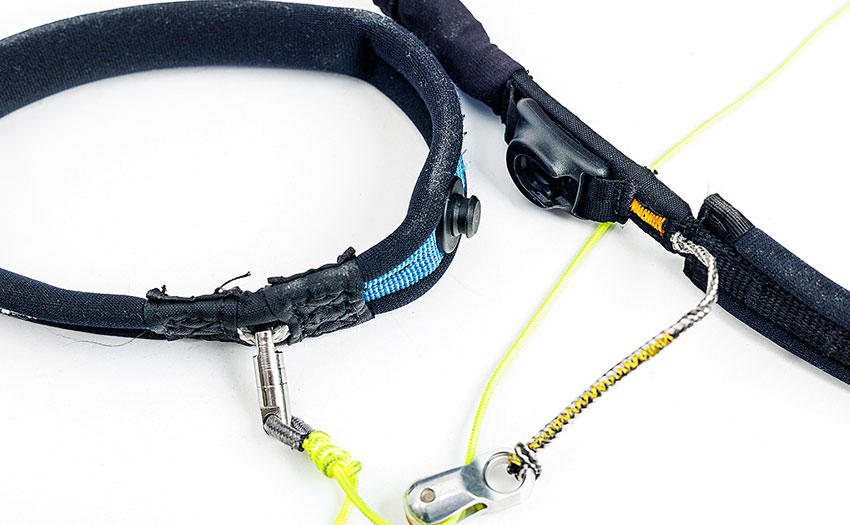
This limited number of changes means the SwiftSix retains ease of use but is not the lightest in this class of wing. The SwiftSix (ML) I flew weighs in at 4.27kg, meaning a saving of 920g over the same sized Rush 6 that weighs 5.19kg. This compares with the Gin Explorer 2 that weighs 3.9kg for the M size that goes up to 105kg all-up. The marginally larger BGD Base 2 Lite weighs 4.1kg and the Nova Mentor 6 Light S that only accommodates up to 100kg all-up hits the scales at 4.2kg.
In the air
With the new Swift in my pack alongside Ozone’s BV1 vol-biv harness, I set off for a flight from our local hill. I was heading for a week’s flying in Bassano the next day and wanted to make sure it was all set up correctly. On launch I attached it to the BV1’s softlinks and took to the air. The wing came up smoothly without rushing and did not need braking as it came overhead. Leaning forward and accelerating I was quickly pulled into the air.
Turning left I flew straight into a thermal. A couple of S-turns and I could drop into 360s as I was carried above the terrain. The Swift is easy to place in the lift and once in the turn doesn’t get knocked about much. It reacts quickly to the first part of the brake range, but there is a lot of travel before you get to the stall point. Push hard and the brake pressure ramps up before you will stall the tip. Even when pushed beyond this point the wing doesn’t snap on you, it is all very progressive. In normal flying there is no need for pilots to be pushing anywhere near this hard: even in strong thermals I could get the wing to 360 easily with brakes and a little weighshift.
Feel-wise it is very similar to the Rush. I was asked if it was more twitchy but in all honesty it is very similar to the heavier sibling with just a touch more feel for what the air is doing through the brakes. Despite the lighter materials the wing retains its good level of comfort, which is important for a wing of this class destined for adventures in the big mountains. The whole package makes for a wing that climbs well in all conditions.

Flying XC
Quickly at the top of our local mountain it was time to head off. First was a ridge run to extend the distance as far as possible. As with the Rush 6 and the Delta 4, Ozone’s rear-riser control system – called ACR, active control riser – gives you a good feel for what the wing is doing whether on bar or at trim. I found myself instinctively putting my hands on the ACR controls when not thermalling. I felt this gave me more feel for what is going on in the air, changes in pressure helping me seek out the lines of lift. I’m convinced this, more than the inherent performance of the wing, helped me glide better than others around me.
On our ridge there are various areas of convergence lift, and it certainly helped me make the most of them. As with the Rush 6 the SwiftSix pushes into the lift well and doesn’t get pushed back at all, which all adds up to great glide performance.

My route took me back past take-off and over the back, a slightly nerve-wracking glide over a shallow tree-covered slope to pick up another ridge before heading over the back again. On the way out the wind had felt strong in places with thermals wind-blown. I was expecting to find the route back challenging, however I discovered an area where I could see wisps of clouds building out front.
Using the ACR control I was able to feel my way forward, pushing out and up until I was able to glide cross-wind to connect with the ridge that would take me back home. The way the wing pushed forward into the bubbles of lift under the forming clouds made the transition easier than expected.
Altitude control
Coming back I had to fly under an area of quite dark cloud. I was already nearly at my airspace ceiling so opted for big-ears and bar to control my altitude. Big-ears on their own are stable but I found if the ears were too large and I added bar they could thrash a bit, something that I had experienced on the Delta 4 too. Taking a moment, I found the correct amount to pull and they became more stable. This gave me good forward speed and degraded the lift enough to keep me below the imposed limit. Once released the ears can be a bit slow to roll out; a pump of the brakes speeds things up.
Spiralling down to land, the ease of use of the wing is evident as it was in the Rush 6. You can easily control the exit to bleed off the energy. On landing there is plenty of brake travel so you can slow it up if needed to drop into tight spaces. In normal landings the brakes are nicely progressive and the wing has an efficient flare for a smooth landing. And so I touched down after 75km or so of flying on my first flight with the wing in February. The smile said it all.
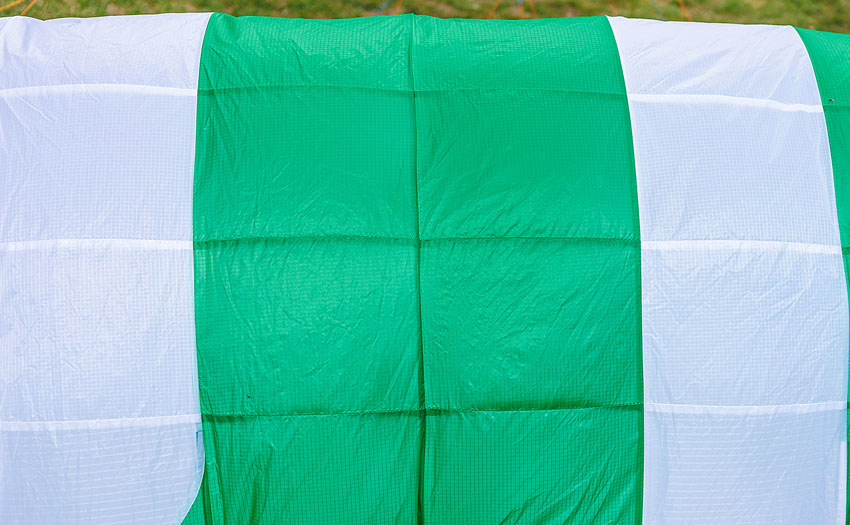
On glide
Over the next couple of weeks I got to fly the wing more. In Bassano we enjoyed weaker conditions, with a low base that kept us below the summits. I spent a lot of the trip flying alongside Cross Country writer Matt Warren on his Ozone Mantra 7 (EN D). We were amazed how close the performance of the two wings was. On transitions together the glide seemed pretty much the same – even flat-out the glide angle was similar but Matt’s M7 had the edge in overall speed. Of course, Matt’s wing isn’t new but it shows how much EN-B wings have improved.
The SwiftSix retains stability across the whole range of the bar, and I was happy flying along pulley-to-pulley, confident I could feel and react to what the wing was doing with the rear risers, although to be honest it needs little control in normal air.
With flights out over the flats, Bassano also gave me the chance to see how the wing behaved in calmer, larger thermals. Gliding out on the ACR controls I found it more efficient to turn using these controls, and only felt the need to shift to the brakes when I wanted to dig into a core. I often used the brake on the inside with the other hand on the ACR to control the outside tip. It certainly felt efficient in these climbs and I soon found myself expecting to be able to keep up with all the wings around regardless of level.

Confidence inspiring
In terms of passive safety and security, the Swift is ideal for adventures in the bigger ranges. I only had a couple of tiny tip tucks in the 15 hours or so I spent under it, and those were early on as I adjusted to it and may have been the wing settling in. This was despite spending time flying on bouncy days in the southern French Alps in protected lee that gives sharp-edged thermals with associated turbulence. It’s a wing that inspires confidence and will keep you relaxed.
As the wing was coming to the market in September, I got to fly a production MS wing just over the top of the range. I found the amount of lift the wing produces meant I didn’t feel at any obvious disadvantage. The first part of the brake travel became even more precise and more than made up for any increase in sink rate and soon I was thermalling to base. Good news if you are going to be loading up from time to time for vol-biv adventures.
The verdict
Overall the SwiftSix is a great wing for adventurous sports pilots. Unless you are regularly flying competitions or doing mega cross-country flights I wonder if you really need much more. What you get is great performance and handling in a wing that is comfortable and untiring to fly. It will keep you fresh for when you need all your concentration such as tight top-landings on multi-day trips.
With no compromises when it comes to behaviour and feel over the Rush 6, if you don’t fly in a place with rough take-offs I would heartly recommend the SwiftSix. Paired with a BV1 it’s an obvious choice for adventure pilots.
Manufacturer’s SPECIFICATIONS
Ozone say: “The SwiftSix is a lightweight version of the Rush 6. Derived from the Alpina 4, it shares performance development features with the Enzo and Zeno series wings, offering the highest glide and XC performance in its class.”
Use: XC and vol-biv
Pilot level: intermediate
Sizes: XS, S, MS, ML, L
Flat area (m²): 20.05, 22.54, 24.04, 25.38, 26.70
Take-off weight (kg): 55-72, 68-85, 75-95,
85-105, 95-115
Glider weight (kg): 3.57, 3.88, 4.11, 4.27, 4.41
Cells: 62
Flat aspect ratio: 5.7
Certification: EN/LTF B
Published in issue 235 (November 2022)


